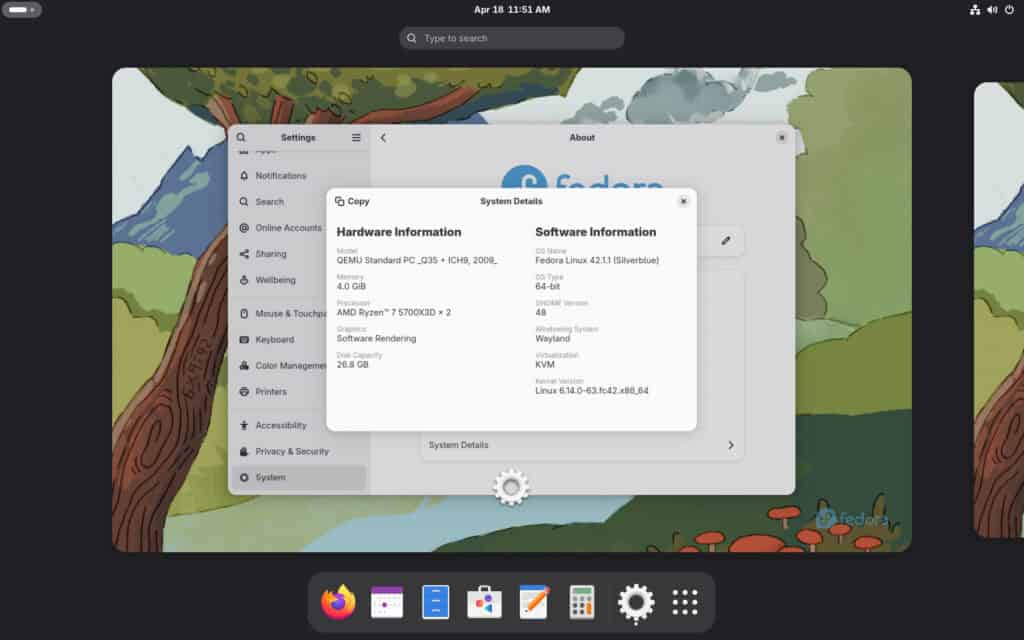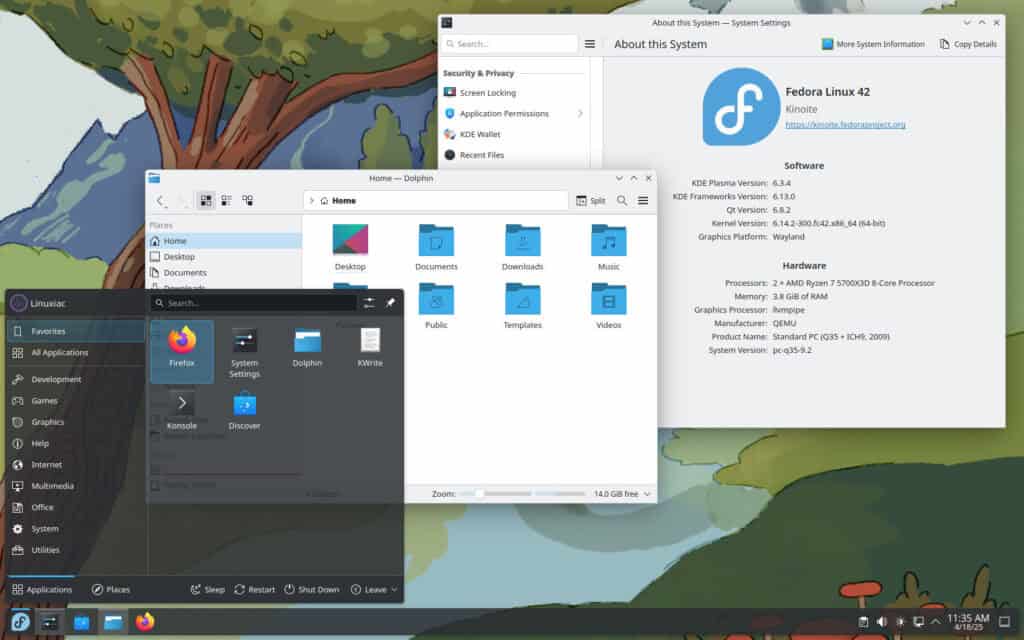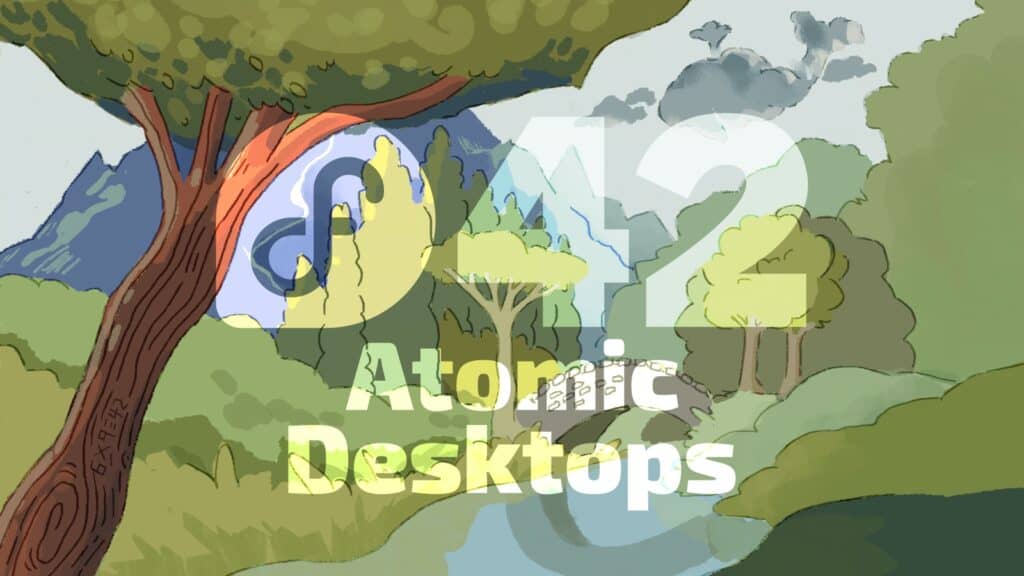Fedora 42 was recently released, capturing much of the attention, as expected. However, their Atomic Desktops brand comes alongside it, which unifies all of Fedora’s rpm-ostree-based (immutable) spins under one umbrella and introduces several exciting updates in their version 42. So, let’s take a look at what’s new.
For me, the main highlight is the introduction of the COSMIC Atomic image, which brings System76’s Rust-powered desktop to the rpm-ostree world. Although the installer ISO has not yet been released on the official download page, the variant has cleared Fedora’s change request process and should appear shortly.
System‑level changes shared by every variant include:
- composefs is enabled by default. Following Fedora CoreOS’s lead in version 41, all Atomic Desktops now mount system content with composefs—a modern Linux filesystem designed to support read-only, composable, and efficient file systems, particularly for use cases such as container runtimes, embedded systems, and immutable OS deployments.
- Static GRUB configuration. To accommodate composefs, Fedora 42 rewrites existing installations to a static “grub.cfg,” eliminating the duplicate menu entries that lingered on systems upgraded from Fedora 41. The migration runs automatically at first boot.
- Installer‑set keyboard layout for LUKS unlock. Anaconda installer now persists the chosen keyboard map as a kernel argument, ensuring that passphrases entered at the early‑boot LUKS prompt match the user’s locale.
- PPC64LE builds are retired. According to devs, usage statistics revealed negligible demand for PowerPC 64 LE images, so nightly and release builds for that architecture are now discontinued.

Now let’s do a quick breakdown by spins. Silverblue ships with the freshly minted GNOME 48 desktop. Users gain niceties such as grouped notifications, smoother animations via dynamic triple buffering, an optional HDR switch for compatible monitors, and new battery health safeguards that cap charging to prolong cell life.

Kinoite gets KDE Plasma 6.3.4, Frameworks 6.11, and Gear 24.12.3 apps collection. Artists and power users will appreciate its revamped graphics tablet settings, smarter fractional scaling algorithms, and the ability to restore virtual desktop layouts on a per-activity basis.
Sway Atomic stays laser‑focused on its Wayland‑native tiling environment, continuing with Sway 1.9 and the latest wlroots stack. Although no release-specific features debut this cycle, the variant inherits the same ComposeFS and static-GRUB advances as its siblings, ensuring the lightweight, i3-inspired experience remains rock-solid.
Lastly, Budgie Atomic updates its GNOME-based desktop to Budgie 10.9 and switches its default software center to Plasma Discover. Because GNOME Software currently redirects rebases to Silverblue, existing Budgie users should perform the Fedora 41 to 42 jump from the command line to stay on their preferred environment.
For more information on all new features in Fedora 42’s Atomic Desktops, refer to the announcement.
